Every year, le musée des explorations du monde offers a thematic temporary exhibition.
Visitors can also discover the permanent collections that were bequeathed to the City Baron Lyclama in 1877.
A series of small rooms, surrounded by gardens, house collections of art and objects from Oceania, the Himalayas and the Arctic, as well as a wealth of Mediterranean antiques and pre-Columbian ceramics. The Chapelle Ste-Anne (St Anne’s Chapel) (12th century) is home to an outstanding collection of musical instruments from around the world (Asia, Africa, America, Oceania).
Three rooms devoted to Orientalism and Iran arts open onto the museum’s courtyard and the 11th century square tower (109 steps) from where there is a stunning panoramic view.
This collection is unique in France. It shows the richness of a folk art arising from inspirations that are both "classical" (mainly linked to Tibetan Buddhism) and "tribal" (Shamanism, village festivals). The pieces on display (masks, women's headdresses, votive statues, etc.) come from the main regions of the Himalayas: India (Ladakh, Arunachal Pradesh), Nepal, Tibet and Bhutan.
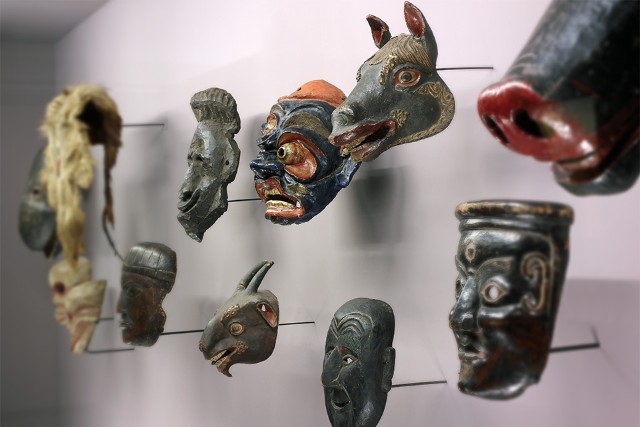
Some 60 Inuit pieces show off the craftsmanship of the primitive populations of Canada, Alaska and Greenland. Objects from everyday life, fishing and hunting tools are displayed either side of a central display case (hooks, snow goggles, etc.). Small figurines, mostly sculpted out of ivory (walrus's or seals' teeth), are shown together in three narrow display cases like precious jewels. They evoke the magical or religious world of the Inuits.
Three wall display cases bring together some 50 ceramics and stone sculptures from Central or South America, dating from the Pre-Columbian period. One display case is devoted to the civilisations of Mexico and Central America, and the other to the civilisations of the Andes and more especially to Peru. There are some remarkable pieces, such as the millstone shaped like a jaguar from Costa Rica or the Peruvian terra cotta pieces, including the impressive female statue from the Chancay culture, the portrait vase from the Mochica culture or the whistling vase from the Chimu-Lambayeque culture and that was made as a musical instrument.
The great age of some of these pieces, their quality and rarity, make this section one of the highlights of the museum. Many of the 124 objects displayed here were collected by the ethnologist Edmond de Ginoux de La Coche during his two stays in Tahiti and on the Marquesas Islands (1843-1845 and 1848). There are several highlights: an array of weapons from Polynesia and Melanesia, including maces; the enclosed space containing effigy figures from Vanuatu; and the prow of a dugout canoe from the Trobriand Islands (New Guinea) in the central area of the second room dedicated to the peoples of the Pacific.
The antiquities are on display in the lower room of the "abbot's tower", a 16th century building. The tower has been partly levelled, but the slanting outline of the lower part of the building can still be seen in the museum garden.
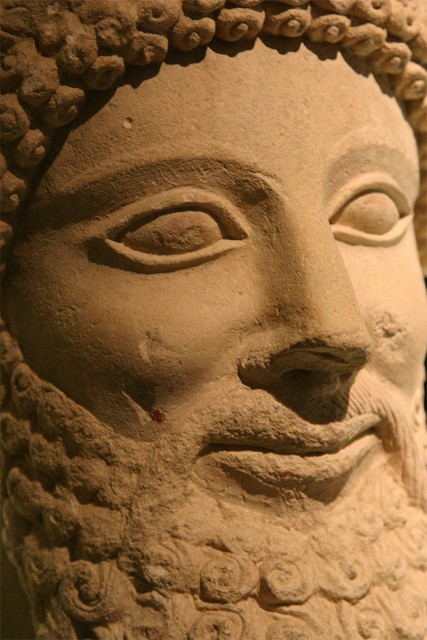
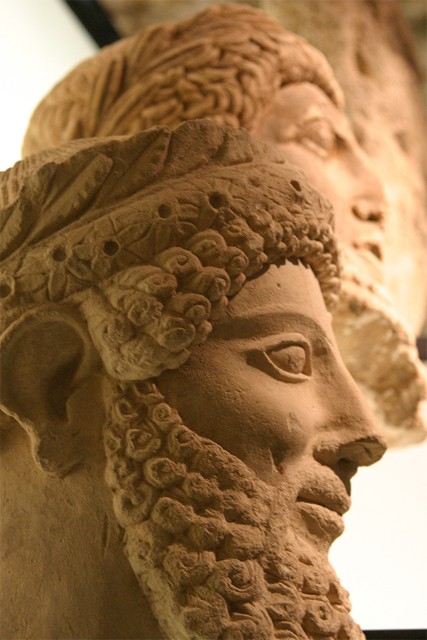
The tower stood at the corner of one of the residential buildings in Cannes castle. In the archaeological room, you can see a rich collection of antiquities from the Mediterranean, ranging from Sumerian clay tablets written in cuneiform to 4th century Christian sarcophagi made of lead.
Visitors can admire almost 5,000 years of art in the display cases, which have been designed like collectors' antique cabinets. Some of the objects come from the Baron Lycklama's collection. They include items he brought back from his travels in the Middle East: from Persia and its capital Teheran; from the ruins of today's Iraq on the Tigris; from Turkey and Constantinople; from today's Syria with Damascus and Palmyra; from the ancient lands of Palestine with Jerusalem and Bethlehem, and from Cyprus.
Another precious series of objects comes from Jacqueline Damien's donation of her father's collection, which she left to the French state in 1992. It was specified that the collection must be kept in the Musée de la Castre. A series of works from the Louvre Museum, the two Etruscan and Egyptian sarcophagi, for example, along with the two paleo-Christian lead sarcophagi, form a group evoking funeral practices in Antiquity.
Cylinder seal Akkadian period
(2340-2200 BC)
Donation Lycklama (1877)
Musée des explorations du monde, Cannes,
inventory n° 2005.0.183
Mesopotamia, stamp in the shape of a bull Red Swan Sumer Group
Donation Lycklama (1877)
Musée des explorations du monde, Cannes,
inventory n°2005.0.224
Cylinder seal Akkadian period
(2340-2200 BC)
Donation Lycklama (1877)
Musée des explorations du monde, Cannes,
inventory n° 2005.0.183
For European intellectuals and artists in the 19th century, travelling to the Orient was a real rite of passage. Until the 1850s, it was also a perilous adventure. But the inventions of the industrial era – the railway, steam engines, the telegraph – made it easier to reach faraway lands.
Tinco Lycklama à Nijeholt (1837–1900), a Dutch aristocrat, was one of the first "tourists" to go in search of exoticism. From his travels in Iran, the Near East and Egypt, he brought back an exceptional collection which he presented to the City of Cannes in 1877.
In the arts, the taste for ancient and Arab-Persian cultures gave rise to a movement with a romantic inspiration: Orientalism. The works on display at the Musée de la Castre provide different visions of this dreamed or experienced Orient.
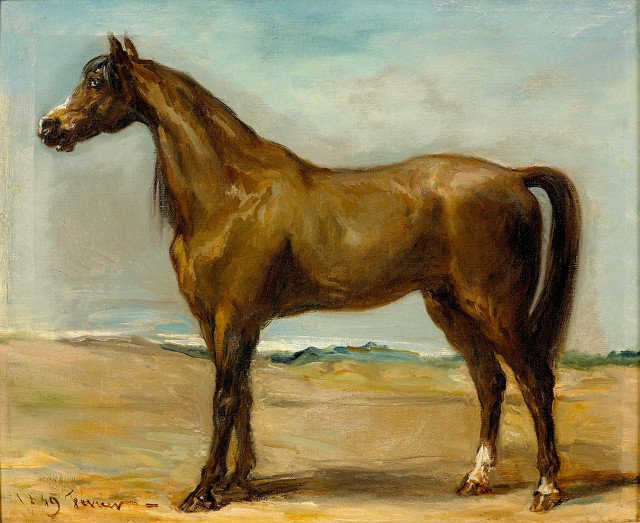
Arab horse - 1849 - Oil on canvas Théodore Chassériau (1819-1856) - Deposit of the French State at the Musée d'Orsay (bequest of Baron Arthur Chassériau, 1934) © photo Germain
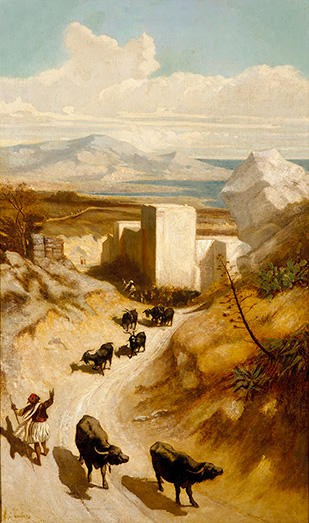
Descent of buffaloes - Oil on canvas Emile Loubon (1809-1863) © photo Germain
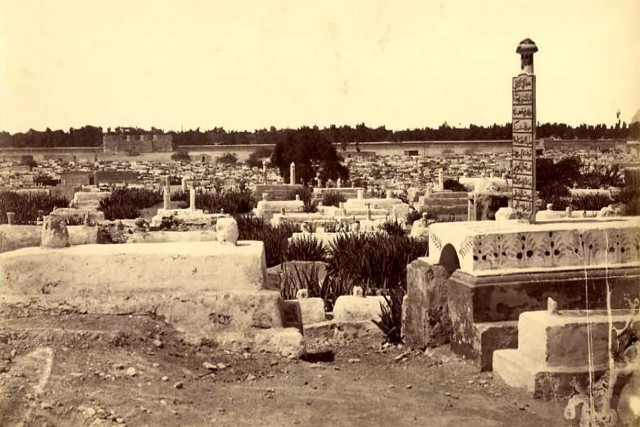
Turkish cemetery, near the Pompey Column in Alexandria - Circa 1870 - Vintage print Félix Bonfils (1831-1885)
In the 19th century, the French Riviera – like Andalusia and the banks of the Bosphorus – attracted travellers with its temperate exoticism: picturesque landscapes, a mild Mediterranean climate, golden light, lush vegetation, etc.
In Cannes, in 1872, as the city was growing, Tinco Lycklama set up his "Oriental museum", with visitors from a cosmopolitan society. The new villas built in Moorish style added to the exotic atmosphere. On Sainte-Marguerite island, from 1841 to the 1880s, the first tourists could see hundreds of Algerian prisoners being deported to Fort Royal. Pictures and photographs from the period have preserved a record of the events.
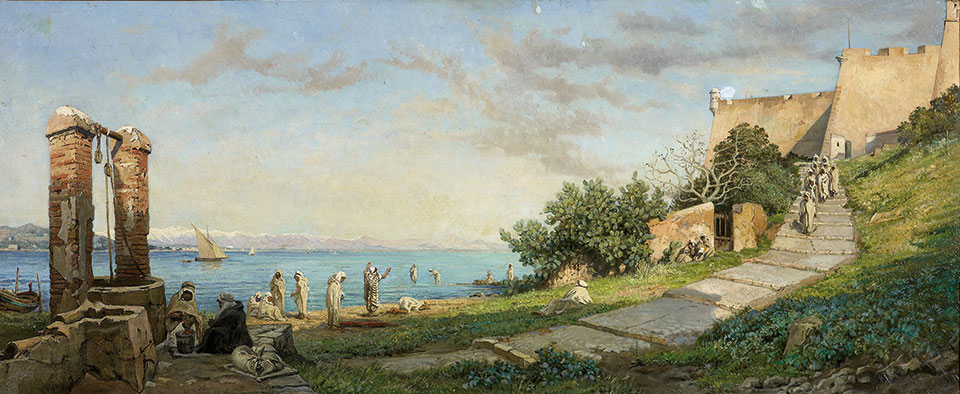
Muslim prisoners on Île Sainte-Marguerite - Oil on canvas Ernest Buttura (1841–1920) © photo Germain
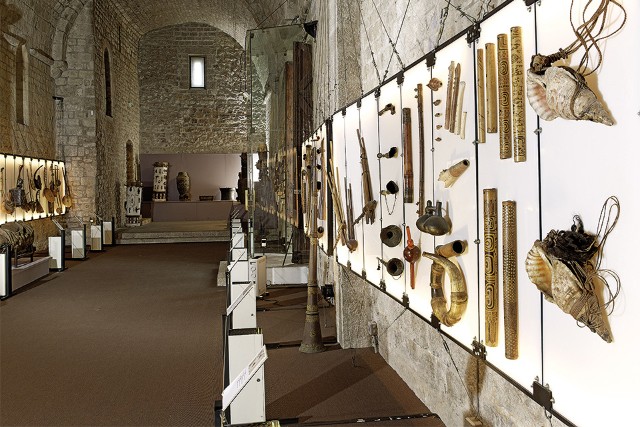
The barrel vault nave with its transverse pointed arches was part of the Lérins monastery. The monks lived in the castle at the top of the Suquet hill. For a long time, this was the only parish church in Cannes, and was shared by the monks and the people of Cannes. The church was built in the 12th century and dedicated to Our Lady of Le Puy. It was enlarged on several occasions in the Middle Ages, but kept its Romanesque style. The very thick, high walls had just a few small openings, including one in the shape of a cross that looks east above the apse where the altar stood. At the top of the pilasters bearing the transverse arches are chapiters or capitals with sculpted human faces. This solid building also had a defensive purpose and was part of a system of ramparts defending the castle. The chapel was abandoned by the local population in the 17th century after they had funded and built Notre-Dame d’Espérance, a church that was independent from the monastery.
The collection of musical instruments from all over the world in the Musée de la Castre, with over 400 items, is one of the most important in a French museum. They come from several collections owned by 19th century travellers, such as Edmond Ginoux de La Coche (1811-1870).
The musical instruments from Africa, Asia, Oceania and America are displayed according to four major categories, depending on the instrument's source of vibration: the aerophones, the idiophones, the membranophones and the chordophones.
Iran is at the crossroads of the caravan routes between the Far East and the Mediterranean. It was the birthplace of ancient civilisations. Here, during the reign of the Achaemenids (550–330 BC), the world's first empire arose.
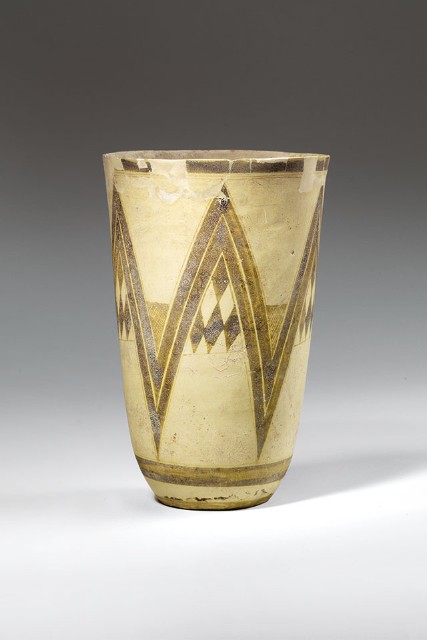
Large “bushel” goblet - Painted terracotta Period of Susa I (4200–3800 BC) Susa, Iran - Louvre museum deposit © photo Germain
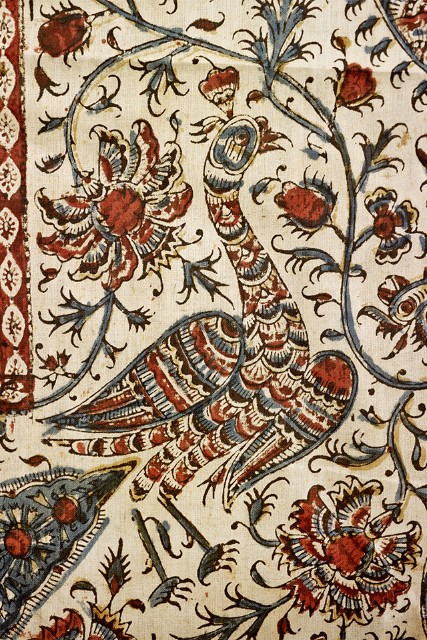
Printed canvas (qalamkari) decorated with peacocks, cypresses and fighting animals (detail) - Cotton, pigments Qajar period - Donation Tinco Lycklama, 1877 © photo Germain
The Iranian collection in the Musée de la Castre is centred on the Lycklama donation (1877) and bears witness to over 7,000 years of history. Works from the Qajar period (1786–1925) have an important place. They were mainly collected by Tinco Lycklama during his two visits to Persia (1866 and 1868). They form a unique collection in France.
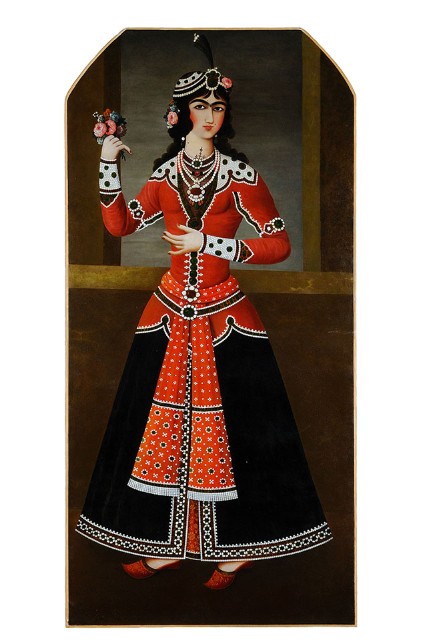
Princess with a bouquet of flowers - Oil on canvas Qajar period - Iran - Legacy Tinco Lycklama, 1885 © photo Holsnyder
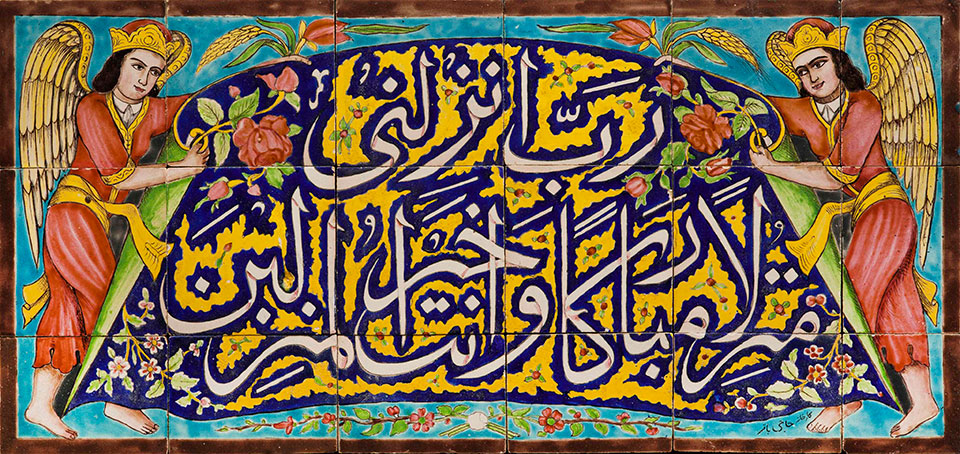
Panel with calligraphic decoration - Ceramic with cuerda seca or black line decoration Signed by the workshop of Hajji Baqir Jahanmiri (1883–1959) - Early 20th century - Shiraz, Iran
The area known as the "Levant", covering today's Syria, Lebanon, Israel, Palestine and Jordan, was a crossroads for trade and exchanges between populations from the Neolithic period.
The period of Antiquity was particularly marked by Phoenician, Greek and Roman influences. It is very well represented in the Musée de la Castre collections. The Lycklama donation includes a series of archaeological treasures from excavations in Sidon, the ancient capital of Phoenicia, located south of Beirut on the Mediterranean coast of Lebanon.
The museum also has four night-time photos taken by Alain Ceccaroli (a French photographer born in 1945) and acquired in 2018. These works, from the series "Les formes de l’ordinaire, Alep", highlight the historic districts of the city of Aleppo between 2002 and 2005.
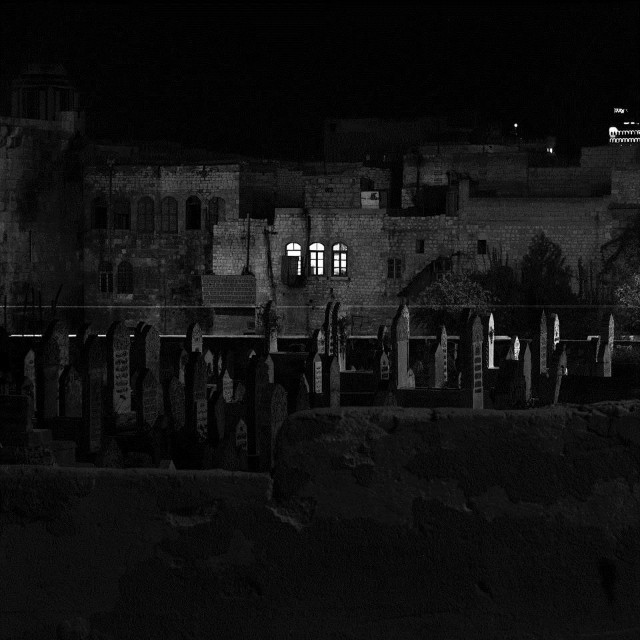
Bab Kinesrin cemetery In the background the inhabited city walls - Aleppo Photographic print on baryta paper, 2004 © Alain Ceccaroli